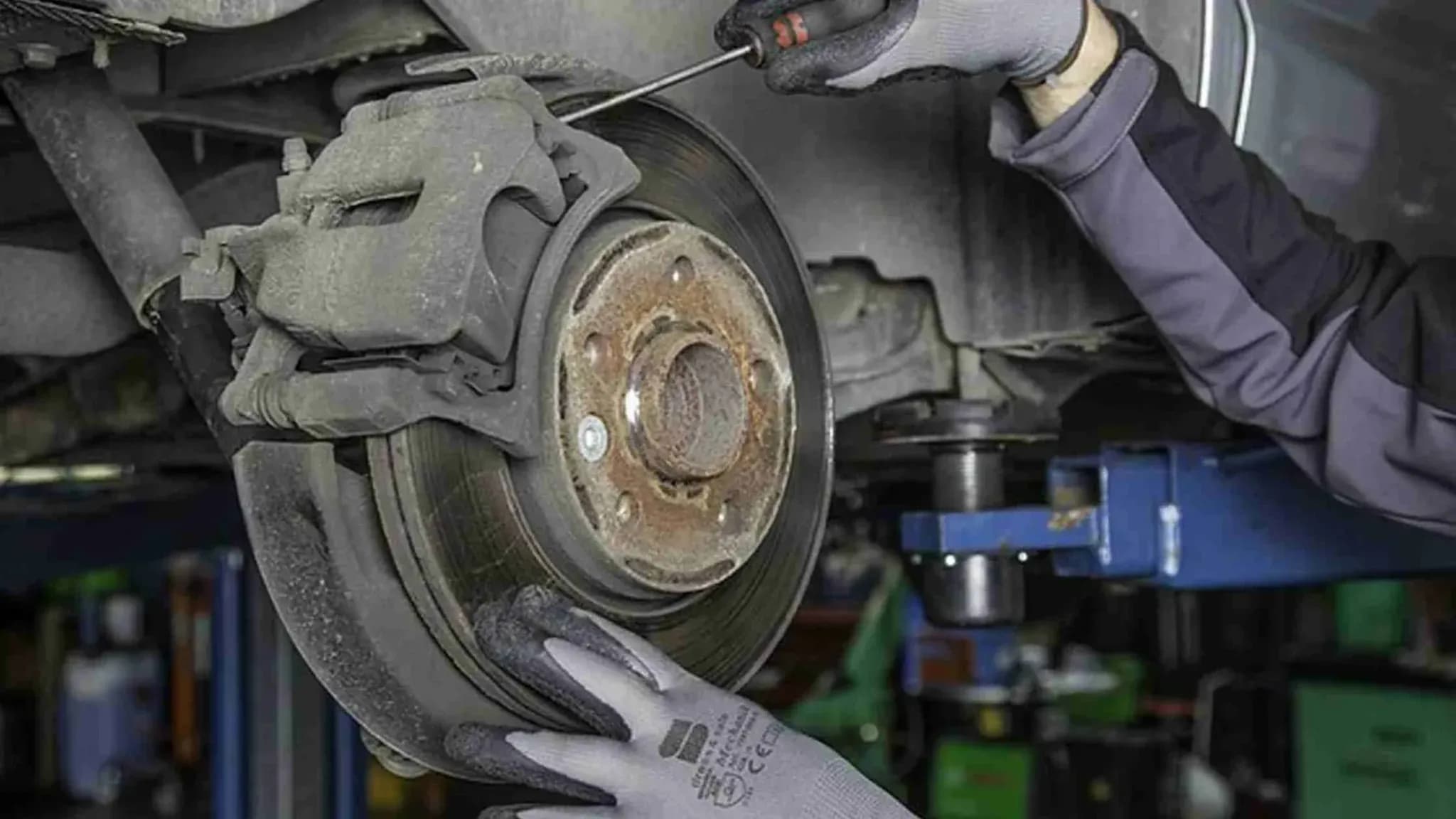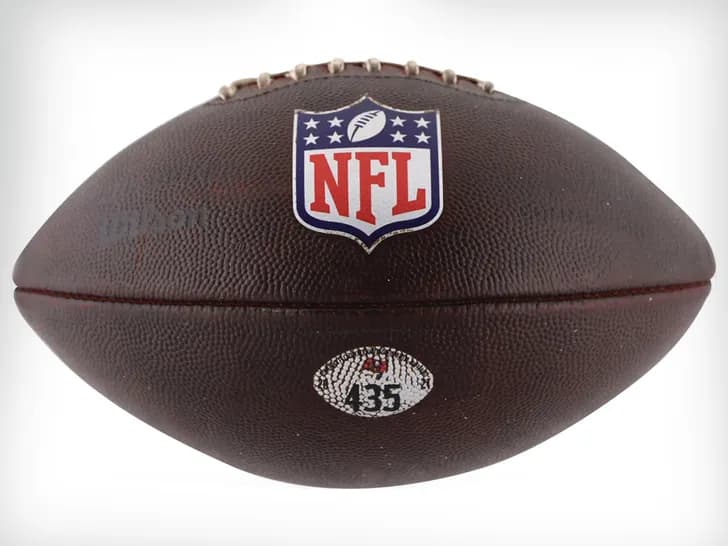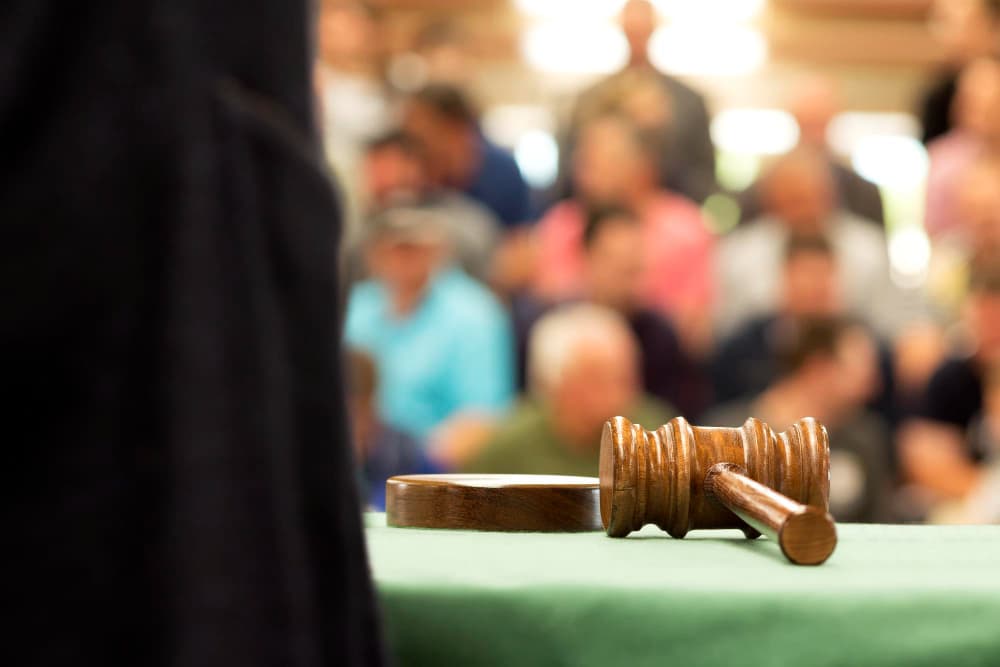Auctioneering is a nuanced and idiosyncratic profession. As with any specialized field, when an attorney without significant industry exposure is presented with an auction case, he or she may face a steep learning curve. Thus, the effective prosecution or defense of auction-related litigation may require the identification and vetting of an auction industry expert. Unfortunately, there is always a risk that an “expert” might dress up personal preferences – and litigation expediencies – as customary practices or industry standards when they are not. A good example of this is the deposition testimony and opinion of a self-described auction industry “expert” in a recent case in which an auction company was sued by an individual who claimed to have been injured while climbing on a tractor trailer rig during an auction preview. On behalf of the individual suing the auction company, the “expert” expressed his opinion that auctioneers must inspect everything they sell for latent, or hidden, defects in order to identify and disclose non-apparent and otherwise unknown conditions to bidders and potential bidders. While held out as an industry standard, this supposed obligation is not an industry standard, nor has it been recognized as a legal requirement.
The case did not involve a failure to disclose a defect that was known to the auctioneer or to the seller, nor did it involve an obvious or apparent defect. There was no evidence – or even any suggestion – that the auctioneer had been informed about a non-obvious defect by the seller, or that the property had been cosmetically altered or improved to disguise material damage or defects known to the auctioneer or to the seller. There was no evidence – or even any suggestion – that the auctioneer intentionally turned a blind eye to evidence that a defective or unsafe condition might exist. Rather, the record demonstrates that no one, not the seller, not the auctioneer, not the individual who sued the auction company, was aware of the hidden defect that allegedly resulted in the injury leading to the lawsuit. However, the “expert’s” opinion was that, within the auction industry, there is an established obligation for every auctioneer to inspect every lot for hidden and unknown defects that are not apparent to the seller, to the auctioneer, or to the bidders – so that those otherwise unknown and non-obvious defects can be disclosed to bidders and potential bidders. In terms of risk allocation, the supposed industry standard articulated by the “expert” would impose significant operational costs on auctioneers, expose auctioneers to expansive potential liability, and effectively make auctioneers the guarantors of their sellers’ goods notwithstanding the fact that most property sold at auction is sold “as is, where is.”
The “expert’s” deposition – along with a very well written motion to exclude the “expert” as unqualified – are matters of public record and are publicly accessible. In the motion to exclude, defense counsel assailed the “expert’s” credibility, demonstrated the “expert’s” opinion to be unreliable, and articulated a compelling challenge – known as Daubert challenge – testing (i) whether the “expert’s” opinion was based on sufficient facts or data, (ii) whether the “expert’s” opinion was the product of reliable principles and methods, and (iii) whether the “expert” applied accepted principles and methods reliably to the facts of the case. While it appears that the case was resolved before the court ruled on the motion to exclude the “expert,” the record exists and makes for interesting reading.
Admitting that he is not licensed as an auctioneer in the state where the auction occurred, has never conducted an auction in the state where the auction occurred, has never conducted an auction of the nature and magnitude of the auction at issue in the case, and does not regularly sell the type of equipment at issue in the case, the “expert” attempted to establish his credentials by identifying himself as a prolific blogger and an instructor and lecturer for the National Auctioneers Association (the “NAA”) and various state auctioneer associations. Propping himself up on the platform afforded to him as a speaker for the NAA and state auctioneer associations, the “expert” claimed that the industry standard requiring auctioneers to inspect everything they sell for latent, or hidden, defects is mandated by Article IX of the National Auctioneers Association’s Code of Ethics. The “expert” also claimed that the alleged industry standard is supported by a supposed fifty-point inspection protocol which, according to the “expert,” has been adopted by an industry leader in the machinery and equipment auction sector. As it turns out, however, the “expert’s” assertions about the NAA Code of Ethics and the inspection protocol attributed to the industry leader referenced by the “expert” were demonstrably inaccurate.
Regarding the industry standard purportedly established by the National Auctioneers Association, the “expert” testified that Article IX of the NAA Code of Ethics requires that all auctioneers inspect everything they sell for latent, or hidden, defects. To support that contention, the “expert” produced a single-page excerpt from the NAA Code of Ethics showing Article IX, which reads as follows:
ARTICLE IX
Members shall avoid misrepresentation or concealment of material facts. There is an affirmative obligation to disclose adverse factors of which they have personal knowledge.
Understandably skeptical as how the NAA’s reasonable guidance that its members should disclose adverse factors of which they have personal knowledge translates into an industry standard requiring all auctioneers to inspect everything they sell for latent defects, the attorney for the defendant auction company asked about that. The “expert’s” response was a classic example of circular reasoning that could have come straight out of Alice in Wonderland, essentially stating that – Auctioneers have an obligation to disclose known defects. If they don’t know about a defect, they can’t disclose it, but they should know about it, so there is an obligation to inspect for hidden defects that neither the auctioneer nor the seller know about so that the auctioneer will discover any such non-apparent and previously unknown defects and will, thus, know about them, and will, then, have an affirmative obligation to disclose the now-known, but otherwise unapparent, defects. Therefore, auctioneers have an obligation to inspect everything they sell for latent, or hidden, defects. This analysis fundamentally misstates the NAA Code of Ethics, and manipulates it to support an absurd contention that does not reflect existing, or historical, industry standards. In addition to the “expert’s” flawed reasoning, his production of a single page from the NAA Code of Ethics was, at the very least, disingenuous, if not intended to deceive. This is because the Preamble to the NAA Code of Ethics (which was not produced by the “expert”) unequivocally states that “A violation of the NAA Code of Ethics shall not form the basis for civil liability nor can such a violation be used as a breach of duty of care in any civil litigation.” Given the express limitations set forth in the Preamble to the NAA Code of Ethics, the “expert’s” decision to cherry pick words and to deploy them out of context cuts against both his credibility and the reliability of his opinion. Even if the NAA Code of Ethics actually said what the “expert” attributed to it (which it doesn’t), his attempt to use it as a basis to establish civil liability in contradiction of the express language of the Code was wholly improper. Finally, defense counsel engaged in post-deposition due diligence resulting in (i) a review of the NAA Code of Ethics, in context and in its entirety, and (ii) an affidavit from a past-president of the NAA who participated in the drafting of the Code of Ethics disputing the “expert’s” assessment and conclusions.
Equally as disturbing as the “expert’s” fabricated and erroneous contention regarding the industry standard supposedly created by the NAA Code of Ethics was the liberty he took in asserting the existence of a supposed fifty-point inspection protocol allegedly designed by an industry leader to identify latent, or hidden, defects. In this regard, a representative of that company flatly contradicted the “expert’s” representations and conclusions in an affidavit that was submitted to the court.
While this “expert” lectures on his understanding of – or, perhaps, more accurately, his preferences for – customary practices and industry standards, the courts have recognized that “[c]ustom is usage so long established and so well known as to have acquired the force of law.” Adams v. Pittsburg Insurance Co., 76 Pa. 411 (1874). In this regard, the New York Court of Appeals has allowed that “it is not to be assumed customary practice and usage need be universal[,]” but, the court observed that the alleged customary practice need “be fairly well defined and in the same calling or business so that ‘the actor may be charged with knowledge of it or negligent ignorance.’” Trimarco v. Klein, 56 N.Y.2d 98, 106 (N.Y. 1982) (quoting Prosser on Torts [4th ed], § 33, p 168; Restatement, Torts 2d, § 295A, p 62, Comment a)). Similarly, from a contract perspective, Uniform Commercial Code Section 1-303(c) defines “usage of trade” as “any practice or method of dealing having such regularity of observance in a place, vocation, or trade as to justify an expectation that it will be observed with respect to the transaction in question. . . .” With these guides to measure the existence and application of customary practices and industry standards, the “expert’s” reliance on a misstatement and misapplication of the NAA Code of Ethics and on the supposed, but inaccurately described, inspection protocol attributed to a single auction company reveals his opinion to be nothing more than a meritless concoction pulled out of thin air, and certainly not a true customary practice or industry standard as defined by the courts.
In addition to the foregoing, when confronted with the issue of whether an auctioneer has an obligation to inspect for latent, or hidden, defects, or unknown hazardous conditions, the courts have refused to impose such a burden on the auction industry. In Meyers v. Robb, 82 Mich. App. 549, 267 N.W.2d 450 (Mich. Ct. App. 1978), Michigan’s intermediate appellate court, addressed the issue as to whether the auctioneer had a duty to inspect the contents of certain fuel barrels sold at a farm auction to determine the existence of an otherwise unknown hazardous condition. Specifically, the court noted that “plaintiffs ask us to recognize an auctioneer’s obligation to inspect all goods sold at a farm auction.” The court, then, considered “whether, given the social utility of such auctions, the magnitude of risk of the auctioneer not inspecting the items for sale justifies the burden imposed by such an obligation.” Recognizing that “all reasonable persons would agree that the risk created by an auctioneer’s failure to inspect the items to be sold at a farm auction is a reasonable risk[,]” the court held that an auctioneer’s “liability may not be predicated upon his failure to inspect . . . .” Meyers, 82 Mich. App. at 555-56. As if to prove the prohibitive cost assessment noted by the Myers court, the “expert” in the case addressed in this article, with the help of a calculator, acknowledged that applying his supposed inspection requirement to the auction at issue would have cost the auction company $100,000.00 and would have consumed 250 eight-hour days if undertaken by a single inspector.
In Blade v. Sloan, 108 Ill. App. 2d 397, 248 N.E.2d 142 (Ill. App. Ct. 1969), an Allis-Chalmers self-propelled four-row combine was sold at auction with the auctioneer warranting that the equipment was “in good repair and ready to go into the field.” While being operated after the buyer took possession, the combine suffered a catastrophic engine failure as a consequence of a malfunctioning governor. Even with the auctioneer’s warranty, the court recognized that it was not customary to check the governor, and noted that, on the record, neither the auctioneer nor the seller had any knowledge of any defect in the governor. The court, then, concluded that “there was no implication that the [the auctioneer and/or the seller] were at fault in any way in failing to check the governor prior to the time of the auction.” Blade, 108 Ill. App. 2d at 405. Thus, in an action by the auctioneer for the purchase price, the buyer was obligated to pay for his purchase notwithstanding the existence of a hidden defect in the combine.
In Brejcha v. Wilson Machinery, Inc., 160 Cal.App.3d 630, 641 (Cal. Ct. App. 1984), the California Court of Appeals considered whether an auctioneer has a duty to inspect lots exposed for sale under the “as is, where is” disclaimer. There, the auctioneer sold a metal rolling machine in its “as is, where is” condition. Subsequently, the plaintiff, an employee of the buyer, was injured while using the machine, which lacked both a point of operation safety guard and an emergency cut-off switch. In sustaining summary judgment in favor of the auctioneer, the California court observed that “[i]t is uncontradicted that in the custom of the auctioning trade, the term ‘as is, where is’ means that the item being sold has not been modified, altered, inspected or operated by the auctioneer.” Brejcha, 160 Cal.App.3d at 641. The court, thus, concluded that “[w]e are aware of no statutory or decisional law . . . which places upon an auctioneer at public auction the duty (an essential element in a negligence cause of action) to inspect or service the machine in question.” Id.
During his testimony, the “expert” attempted to split a fine hair by arguing that the “as is” standard was inapplicable because the individual suing the auction company was not a purchaser, but, rather, was injured during the auction preview. The difficulty with this argument is that, when goods are being exposed for sale “as is,” the disclaimer serves as notice to buyers and potential buyers alike that the goods have not been modified, altered, inspected or operated by the auctioneer.
Given the foregoing, neither the law nor actual customary practices or industry standards impose a duty on an auctioneer to inspect goods sold at auction for latent, or hidden, defects. Undeniably, the “expert’s” opinion was not based upon sufficient facts, nor was it the product of reliable principles and methods properly applied to the facts of the case. The late auctioneer and attorney Steve Proffitt would often lament – “You can’t make this stuff up.” Well, unfortunately, it appears that at least one auction industry “expert” thinks you can; and that doesn’t benefit the industry.
The lessons that come out of this case go far beyond the dispute between the immediate parties. First, this case demonstrates the potential for real damage to the industry that can be inflicted when a self-proclaimed “expert” attempts to introduce a non-existing obligation as an industry standard. Second, this case shows how a self-proclaimed “expert” risks a complete loss of credibility, both within the industry and among lawyers looking to hire an expert witness, when there is a publicly accessible record showing that he simply made-up supposed customary practices and industry standards – that, if adopted and applied, would fundamentally alter the industry and the potential liability of auctioneers. In this regard, auctioneers should understand that not every opinion rendered by a so-called “expert” is credible or reliable. This is particularly important considering that – when not testifying on behalf of people suing auctioneers – this very same “expert” advises auctioneers to use bidder-friendly terms and conditions and to avoid provisions that reasonably allocate the risk away from the auctioneer or otherwise shield the auctioneer from liability.
In anticipation of the “expert’s” push-back, including the use of a strawman argument suggesting that I am advising auctioneers not to disclose defects or hazardous conditions, that is simply not the case. I am not suggesting that auctioneers should fail to exercise reasonable diligence or fail to disclose known defects or hazardous conditions. The issue is whether a completely made-up standard ought to serve as the basis of liability pursuant to which auctioneers will become the guarantors of their sellers’ property. The issue is also a matter of intellectual dishonesty by an “expert” seeking to shape the industry according to his personal practice preferences. While it is fair for a commentator to express personal practice preferences, it is improper for an “expert” to portray personal practice preferences as mandatory industry standards when they are not. The willingness of this “expert” to render an opinion that industry standards require auctioneers to inspect all property sold to determine the existence of latent, or hidden, defects that are otherwise unknown to the auctioneer and the seller also raises serious ethical concerns. Either the “expert” doesn’t know that no such industry standard exists (in which case he sold an opinion that he wasn’t competent to give), or he knew that there was no such industry standard (in which case he sold an opinion that he knew was erroneous). Under any circumstances, professional ethics should have prevented such an opinion from being delivered.
As stated at the beginning of this article, Auctioneering is a nuanced and idiosyncratic profession, and litigating an auction case may require a well credentialed and credible expert. While identifying the proper expert may take some effort, there are numerous experienced, knowledgeable, and highly regarded auctioneers who can satisfy that need. When venturing into unknown territory, however, lawyers and auctioneers should exercise care in choosing their guide – just ask the Donner party about that.
THIS ARTICLE IS FOR INFORMATION AND DISCUSSION PURPOSES ONLY, AND IS NOT INTENDED AS, AND CANNOT BE RELIED ON AS, LEGAL ADVICE. NO ATTORNEY-CLIENT RELATIONSHIP IS INTENDED OR ESTABLISHED. SPECIFIC QUESTIONS SHOULD BE REFERRED TO AN ATTORNEY OF YOUR OWN CHOOSING.
†George A. Michak has been practicing law for more than thirty years, and regularly represents auctioneers and auction companies on wide-ranging issues, including litigation, contracts, and licensing. He regularly speaks before industry groups about auction law and ethics, and teaches auction law and ethics at the Reading Area Community College, the Reppert School of Auctioneering, and the Mendenhall School of Auctioneering. Currently a solo practitioner, he was previously a partner in a Pittsburgh-based law firm, and, was, earlier, associated with national law firms based in Washington, D.C. and Pittsburgh, Pennsylvania.







